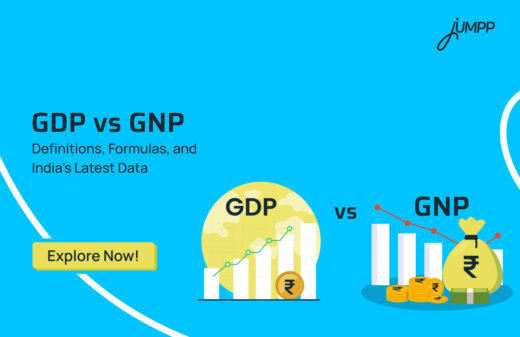Choosing Between the Types of Investments in India: Risk, Return, and More

Most of us start investing by copying others, a friend’s FD, a cousin’s mutual fund, a neighbour’s LIC or a colleague’s SIP suggestion. But here’s one important thing! What works for one person may not work for you. The real question is: what are your goals, and which investment categories suit that? Today, we will explore different types of investments in India along with the risk, return, lock-in, and who it’s actually meant for.
Investment Categories in India
Let’s learn about all the investment categories, including equity, debt, hybrid, real assets, and alternative instruments, with relevant investment examples and explanations of how they work.
From traditional options like fixed deposits and public provident fund to market-linked products like ETFs and REITs, the range of types of investments available in India is both deep and diverse.
Each asset class has its own structure, risk profile, return potential, and purpose. While there is no universal best option, knowing the various investment options and when to use them can improve your long-term outcomes significantly.
Investment Options in India with Risk, Return, and Tax Benefits (2025)
| Investment Type | Risk Level | Liquidity | Return Potential | Lock-In / Tenure | Tax Benefits | Ideal For |
| Stocks | High | High | High | No lock-in | Taxable (LTCG/STCG) | Long-term wealth creation |
| Mutual Funds (Equity) | Moderate-High | Moderate-High | Moderate-High | No fixed lock-in | 80C (ELSS funds only) | Diversified equity exposure |
| ETFs | Moderate | High | Moderate | No lock-in | Taxable | Low-cost, passive investing |
| Fixed Deposits | Low | Low-Moderate | Low | 7 days to 10 years | 5-year FDs eligible | Capital safety and assured returns |
| Government Bonds | Low | Low | Low-Moderate | 1 to 30 years | Taxable / SGB exempt | Conservative, long-term savers |
| NPS | Low-Moderate | Low | Moderate | Till retirement | 80C + 80CCD(1B) | Retirement corpus building |
| PPF | Low | Low | Moderate | 15 years | 80C + interest exempt | Long-term safe saving |
| Gold (Physical/SGB/ETF) | Low-Moderate | Moderate | Moderate | SGB – 8 years (early exit after 5) | SGB interest taxable | Inflation hedge, traditional asset |
| Real Estate | Moderate | Very Low | Moderate | Illiquid | Depends on ownership | Long-term asset, rental income |
| REITs | Moderate | High | Moderate | No lock-in | Taxable | Real estate exposure without ownership |
| ULIPs | Moderate | Low | Market-linked | 5 years minimum | Section 80C | Life cover with investment |
| Derivatives (F&O) | Very High | High | Very High | Short-term contracts | Taxable | Hedging or experienced traders |
| Commodities (via futures/ETFs) | High | Moderate | High | Short to medium term | Taxable | Advanced portfolio diversifier |
| Annuities | Low | Very Low | Low | Long-term | Depends on plan | Post-retirement income |
Types of Investments in India: Core Categories You Must Know
At the most fundamental level, investments can be classified into three primary categories:
1. Equity-based investments
2. Debt-based or fixed income investments
3. Hybrid or alternative instruments.
A fourth category, cash and cash equivalents, though limited in return potential, is also essential for liquidity management.
Equity-based Investments
These refer to instruments that provide ownership in a business or participation in the performance of a company. This includes direct shareholding, mutual funds that hold stocks, exchange-traded funds that track equity indices, and private equity placements. These instruments are market-linked and carry a high degree of volatility, but over longer time horizons, they have shown the potential to generate inflation-beating returns.
Direct Stocks: These are shares of publicly listed companies traded on Indian stock exchanges like NSE or BSE. You can buy stocks through a registered stockbroker. When you hold a stock, you may earn through capital appreciation and, in some cases, dividends.
To start investing, you’ll first need a demat account.
Open a free demat account now!
Equity Mutual Funds: These funds collect money from many investors and invest in a diversified portfolio of stocks. Fund managers select companies based on specific strategies. You can invest in actively managed funds or passive funds that track an index like Nifty 50.
Exchange-Traded Funds (ETFs): ETFs are funds traded like stocks on exchanges. They track specific indices or sectors and offer a low-cost way to gain market exposure.
Equity-based instruments suit investors who have a higher risk appetite and a longer investment horizon.
Debt-based Investments
Debt-based investments, on the other hand, represent capital lent by investors to governments, corporations, or financial institutions in exchange for a fixed or variable rate of interest.
The underlying principle in fixed income investing is capital preservation with predictable cash flow.
However, not all debt instruments are risk-free. The credit quality of the issuer, interest rate movements, and liquidity of the product can influence returns and risk exposure.
Fixed Deposits (FDs): These are offered by banks and NBFCs. FDs provide guaranteed returns for a fixed tenure. They are low risk and widely used across India. Premature withdrawal is possible but may attract penalties.
Government Bonds: These are issued by the Reserve Bank of India and include sovereign gold bonds, treasury bills, and long-term government securities. They are considered safe due to sovereign backing.
Corporate Bonds and Non-Convertible Debentures (NCDs): Issued by companies to raise capital. These carry a higher risk than government bonds but may offer better returns. The credit rating of the issuer is an important factor here.
Debt Mutual Funds: These funds invest in instruments like commercial papers, certificates of deposit, and government bonds. Types include liquid funds, gilt funds, and credit risk funds. Returns vary based on interest rates and market conditions.
These are ideal for balancing risk in a portfolio and generating regular income.
Hybrid Instruments
These are structured products that combine characteristics of both equity and debt. These may offer a balance between stability and growth and are typically used for diversification purposes.
If you’re wondering what is diversification and how it actually helps in investing, read this!
In recent years, Indian markets have also seen growing interest in alternative investments such as real estate investment trusts (REITs), commodities, derivatives, and even private investments through platforms.
Cash and cash equivalents serve as low-risk holdings that allow investors to park funds temporarily. These include savings accounts, short-term fixed deposits, treasury bills, and money market instruments. While they offer high liquidity, their returns may not be sufficient to protect against long-term inflation.
Compare ETF vs Mutual Fund and choose the right investment option.
More Investment Options to Match Your Financial Goals
Arbitrage Funds
These exploit the price difference between cash and futures markets. They are low-risk in nature and taxed like equity funds.
Unit-Linked Insurance Plans (ULIPs)
These are life insurance products that invest part of the premium in market-linked funds. Returns depend on market performance. They offer life cover and tax benefits, but may have high charges in the early years.
Hybrid investments are suitable for those who want diversification and moderate returns.
Real Assets
Real assets are physical or tangible investments. They hold intrinsic value and are not directly linked to stock market volatility.
Real Estate
Investing in property is common in India. It includes residential plots, flats, or commercial spaces. Returns are earned through rental income or price appreciation. Real estate is illiquid and capital-intensive.
Gold
Traditionally, a store of value in Indian households, these can be held in physical form or as financial assets. You can now also invest in digital gold.
- Physical Gold: Jewellery, coins, and bars. Storage and purity are concerns.
- Gold ETFs and Mutual Funds: Track domestic gold prices and offer better liquidity.
- Sovereign Gold Bonds (SGBs): Issued by the RBI. Offer interest income along with price appreciation, and are tax-efficient if held till maturity.
Retirement and Government-Backed Schemes
These are long-term products designed to offer safety, stability, and tax benefits.
Public Provident Fund (PPF): A government-backed savings scheme with a 15-year lock-in. It offers compound interest and tax benefits under Section 80C.
Employees’ Provident Fund (EPF): This is mandatory for salaried employees. Contributions from the employee and the employer are invested to build a retirement corpus.
National Pension System (NPS): A voluntary pension scheme regulated by PFRDA.
It offers exposure to equity and debt through fund managers. Withdrawals are partly taxable, but contributions are eligible for deductions under Section 80CCD.
Senior Citizens Savings Scheme (SCSS) and Sukanya Samriddhi Yojana (SSY) are other notable schemes offering fixed interest, capital protection, and tax benefits for specific segments.
These instruments are not only secure but also help in long-term financial planning.
Alternative Investment Examples
Alternative instruments offer exposure beyond traditional asset classes. These are suitable for sophisticated investors who want to diversify further.
Real Estate Investment Trusts (REITs): Pooled investments that own and operate income-generating real estate. Offer regular dividends and trade on stock exchanges.
Commodities: Includes metals, crude oil, and agricultural goods. Investors can gain exposure via commodity futures or thematic ETFs. Prices can be volatile and affected by global factors.
Derivatives (Futures and Options): These are contracts based on the price movement of underlying assets like stocks, indices, or commodities. They are leveraged and complex instruments. These are often used for hedging or speculative trading and are only suited for experienced participants.
Annuities: Insurance products offering regular payouts after a lump sum investment. Suitable for retirees looking for predictable income.
These instruments add depth to a portfolio but require a thorough understanding before investing.
Conclusion
India’s financial system offers various types of investments, each suited to different financial goals, risk capacities, and time horizons. From growth-oriented equity instruments to capital-protecting debt investments, from tangible real assets to sophisticated alternative options, the market offers tools for every stage of wealth building.
But not every option is right for every investor. While many are drawn to equity for its growth potential, others value the security of fixed-income assets or the tangible nature of gold and real estate. It is crucial to first understand the types of investments available and then narrow them down based on what fits your financial timeline, risk tolerance, and liquidity needs.
This knowledge not only helps in choosing the right products but also protects you from misaligned or impulsive decisions. The better you understand the various investment options, the more confidently you will be able to grow and protect your wealth.
Different Investment Options- FAQs
The 7 common types of investments include stocks, bonds, mutual funds, real estate, gold, fixed deposits, and alternative assets.
The 7-5-3-1 rule is a simplified way to understand expected returns from SIPs over time. It’s not a guarantee, just a basic framework to explain investment timelines.
There’s no one-size-fits-all investment in India. The best option depends on your financial goal, risk comfort, and time horizon.
The 12 key sectors include IT, banking, pharma, FMCG, energy, auto, real estate, infra, telecom, chemicals, textiles, and metals. These are tracked through sectoral funds or stocks.
Popular investment types in India include stocks, mutual funds, FDs, real estate, and gold. Each has a different risk and return profile.
Capital investments usually refer to land, machinery, buildings, and tech infrastructure. These are long-term assets used to grow a business or personal net worth.






